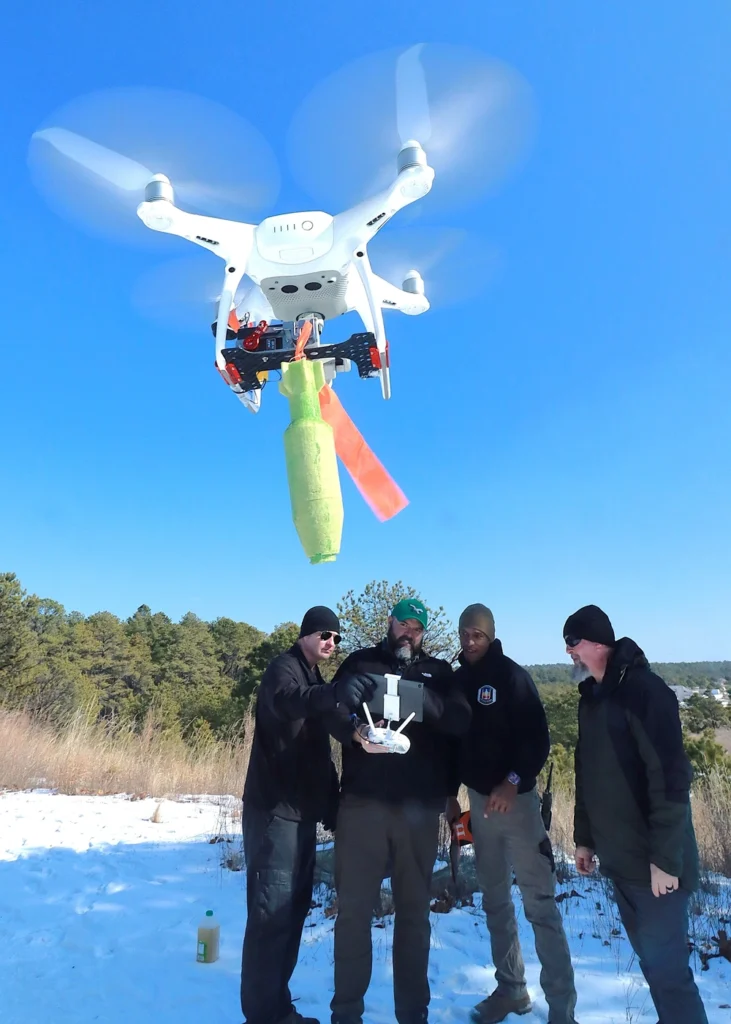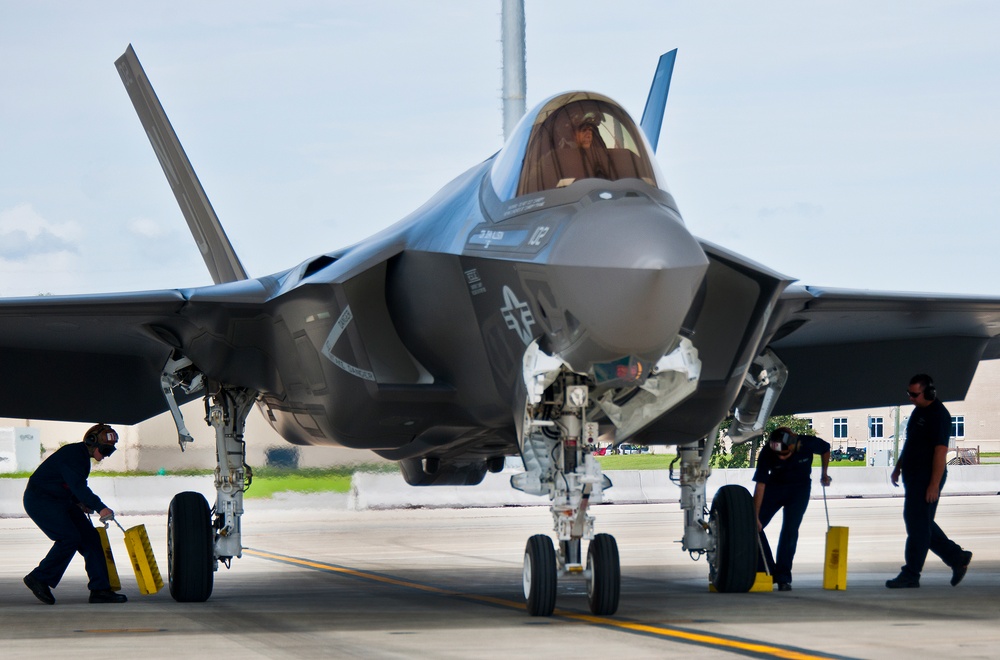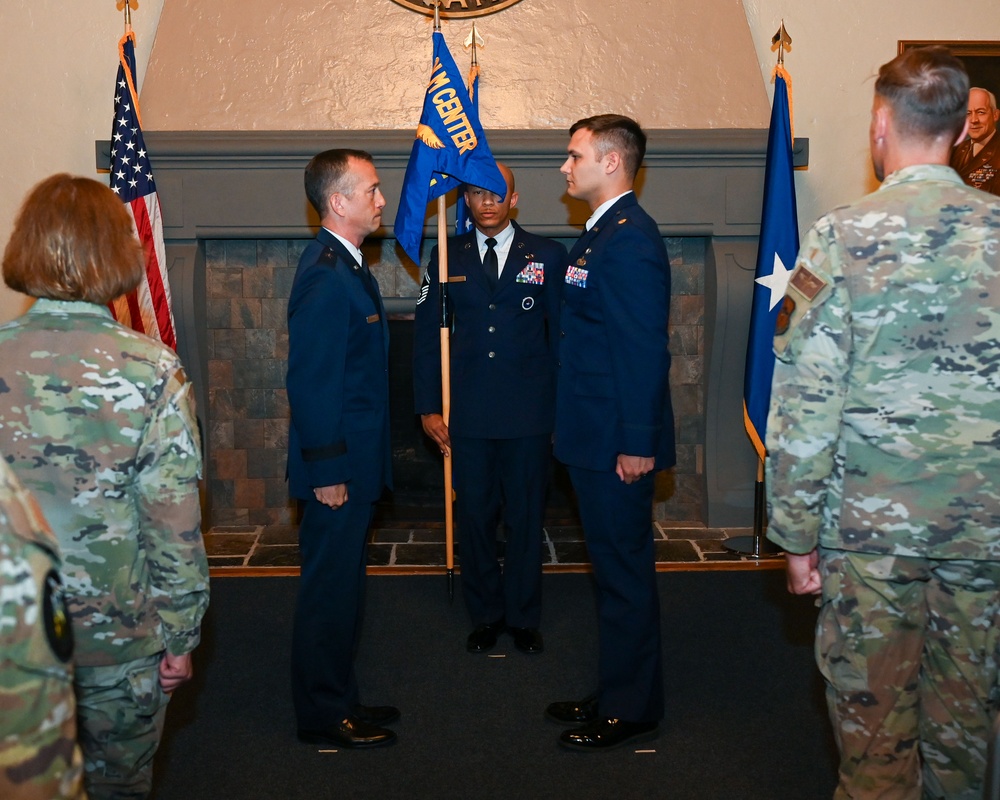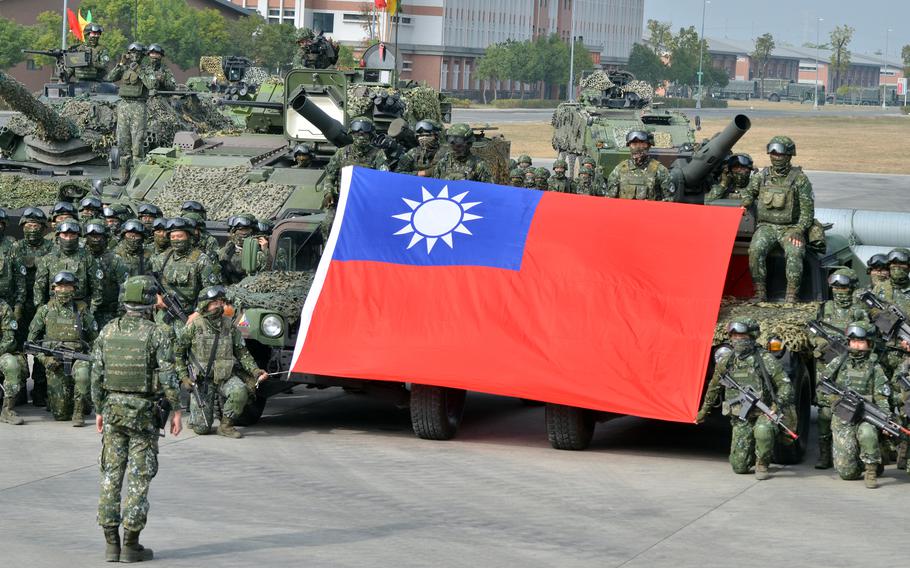The Pentagon is getting a counter-drone task force as threats from unmanned aerial systems increase
- By Hope Seck
Share This Article

Enemy drones are “changing the character of conflict,” according to a recent strategy document published by the Pentagon, and the threat is only increasing as the U.S. military scrambles to act in a unified way to stop them. In the wake of reports in November and December about large and mysterious drones seen in the skies of New Jersey, a new law is taking effect that will create a counter-unmanned aerial systems (C-UAS) task force that will align all military bases with procedures for stopping the threat.
The language passed in the 2025 National Defense Authorization Act and signed by President Joe Biden before he left office gives the secretary of defense 30 days to establish or designate the task force. The SecDef and the chairman of the Joint Chiefs of Staff, will them have 90 days to, with the help of the task force, review and update all DoD memos and directives related to taking down enemy drones “to provide clarity to and an expedited decision-making process for commanders with respect to effectively countering unmanned aircraft systems or unmanned aircraft incursions at military installations in the United States.”
Within 120 days, the SecDef, having completed a review of existing C-UAS guidance, will have to distribute new guidance to base commanders, who will then issue base-specific operating procedures for how to counter drones. The defense secretary, in the same timeframe, will also have to submit a report to the House and Senate Armed Services Committees on how the military is being trained to defeat hostile drones, complete with a description of training and curriculum provided to commanders.
The Pentagon, which has new leadership with the recently installed Pete Hegseth, has yet to announce initial actions in setting up the task force.
This effort to coordinate domestic counter-drone efforts, signed into law December 7, comes just days after the Pentagon announced it had a new classified strategy for countering drones, both domestically and across the globe. According to an unclassified fact sheet, action items for the Defense Department include working to “sense and make sense” of just how much of a threat unmanned systems pose by developing a deeper knowledge base about them; disrupting and degrading threat networks; and improving active and passive defenses, in part by clarifying authorities and streamlining coordination across doctrine, leadership, and facilities.

Part of the challenge of countering the threat from drones is that it runs counter to much of how the military has been trained to think about major military threats. Drones take many shapes, can be cheap and easily purchased, are hard to spot, and have numerous civilian uses that muddy the picture of what’s actually a threat and what’s not.
(In her first press briefing following the January 20 inauguration of President Donald Trump, White House Press Secretary Karoline Leavitt said the drones spotted over New Jersey belonged to civilians, had been authorized by the Federal Aviation Administration, and were “not the enemy,” despite rampant speculation and fears. Some local leaders still aren’t so sure)
In 2020, as I reported at Military.com, a group of infantry Marines put together their own 96-page operating manual about hiding from drones on the battlefield and in training, since clear guidance from top leadership was not forthcoming.
“The environment over the last 20 years has not really forced us to place a premium on camouflage,” Captain Walker Mills, a co-author of the manual, said at the time. “The current environment and the commandant’s planning guidance [both indicate] … ‘Hey, we need to worry about this a little bit more.'”
That, of course, was before the start of the war in Ukraine, which put a major spotlight on the impact of drones in warfare, revealing their ability to defeat major battlefield weapons systems like tanks, evade jamming with an ever-evolving range of control mechanisms and frequencies, and overwhelm defenses with swarming capabilities. On home turf, as domestic drone systems become more common – as seen in the recent New Jersey incidents – the difficulty of distinguishing friend from foe also continues to challenge military leaders.
Related: The Marines want to make their secret beach-swarming drones autonomous

Measures used to take down drones at military bases range from jammers to bullets. USA Today reported that UAS incursions to DoD installations may number in the thousands, though most are not made public.
Zak Kallenborn, a drone swarms analyst and adjunct fellow with the Center for Strategic and International Studies, told Sandboxx News that defending against drones on the homeland comes with its own slate of challenges, as DoD must interface with FAA, the Department of Homeland Security, and other agencies that may have purview. Then there’s the concern, he said, about taking a too aggressive approach to a drone that may not pose a threat at all.
“How does a local base commander balance those risks, especially when we know that at least a substantial amount of these drones are just, you know, some guy that’s just flying around,” Kallenborn told Sandboxx News. “We do know those people exist, and they may just be flying in the general area. And so how you appropriately assess and engage that threat can be a challenge in a domestic environment where you know that someone might get very well upset that their drone got shot down as well as, you know, managing some of the legal issues that come with it. So I think there’s a lot of uncertainty in terms of how to do that.”
While Kallenborn voiced support for the Pentagon’s C-UAS strategy and the new task force initiative, he emphasized that the challenges are real – the threat from drones is so diverse and quickly evolving that it evades a “silver bullet” solution. Countering the range of threats, he added, is going to take a mix of detectors and interceptors, as well as effective policy to employ them.
“So how do you integrate all of these in a systematic way across the department, I think, is gonna be the key challenge,” Kallenborn said. “Because this isn’t just a single part of the DoD that has this challenge. It’s potentially everyone and everywhere.”
Feature Image: A senior Observer Coach/Trainer fires a Dronebuster Electronic Warfare System at the Counter Unmanned Aircraft System Training in the Rotational Unit Bivouac Area on January 30, 2020. Having experience on how UASs react to the Dronebusters will allow them to adjudicate fairly. (U.S. Army photo by Spc. Gower Liu/11th ACR Public Affairs)
Read more from Sandboxx News
Related Posts
Sandboxx News Merch
-

‘AirPower’ Classic Hoodie
$46.00 – $48.00 Select options This product has multiple variants. The options may be chosen on the product page -

‘Sandboxx News’ Trucker Cap
$27.00 Select options This product has multiple variants. The options may be chosen on the product page -

‘Kinetic Diplomacy’ Bumper Sticker (White)
$8.00 Add to cart
Hope Seck
Hope Hodge Seck is an award-winning investigative and enterprise reporter who has been covering military issues since 2009. She is the former managing editor for Military.com.
Related to: Military Affairs

Watchdog reveals F-35’s readiness rates – and they’re not looking good

Air Force has a new secret weapon: Warrant officers

Drones and conscription: Taiwan is learning from Ukraine’s fight against Russia

The ships that take Marines to war are in really, really bad shape
Sandboxx News
-

‘Sandboxx News’ Trucker Cap
$27.00 Select options This product has multiple variants. The options may be chosen on the product page -

‘AirPower’ Classic Hoodie
$46.00 – $48.00 Select options This product has multiple variants. The options may be chosen on the product page -

‘AirPower’ Golf Rope Hat
$31.00 Select options This product has multiple variants. The options may be chosen on the product page -

‘Sandboxx News’ Dad Hat
$27.00 Select options This product has multiple variants. The options may be chosen on the product page
